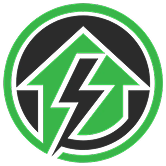How to Build a Reliable Backup Power System for Your Home: Step-by-Step
Introduction
Power outages can strike at any time — from storms to grid failures — and leave your home without lights, heat, or Wi-Fi. A reliable backup power system ensures that your home stays powered and comfortable, no matter what happens outside.
At Build The Power, we help homeowners design flexible and efficient systems combining solar panels, battery storage, inverters, and generators for total energy security.
Here’s how to build your own backup power setup — step-by-step.
Step 1️⃣: Assess Your Power Requirements
Start by identifying the essential appliances you want to run during an outage — typically:
-
Refrigerator
-
Wi-Fi router
-
Lighting circuits
-
Sump pump
-
Medical devices
-
Heating system (or small heater)
🧮 Calculate total wattage:
Add up the running watts of each appliance and include 20% extra for surge power.
Example:
If your essentials total 3,500 watts, choose a system rated for 4,000–5,000W continuous output for safety.
Step 2️⃣: Choose Your Power Source
You have three main options (and many people combine them):
🔹 Option 1: Solar Power System
Clean, renewable, and long-term sustainable.
-
Use solar panels to generate power.
-
Pair with batteries for night use.
-
Works automatically when the grid goes down.
👉 Explore Complete Solar Systems.
🔹 Option 2: Battery Backup System
Stores energy for when you need it most — silently and instantly.
-
Works independently or with solar panels.
-
Ideal for homes needing quiet operation.
-
Can power essential circuits for hours or days.
👉 Browse Battery Storage Systems.
🔹 Option 3: Generator Backup
Perfect for extended outages or high-demand homes.
-
Available in gas, diesel, or dual-fuel.
-
Can recharge batteries or directly power your home.
-
Reliable in all weather conditions.
👉 Shop Generators.
Step 3️⃣: Add a Power Inverter
Your home appliances run on AC power, but solar panels and batteries store DC power. You’ll need a power inverter to convert DC to AC safely.
Why it matters:
-
Ensures compatibility with home circuits.
-
Provides clean, stable energy for electronics.
-
Available in various capacities for all system sizes.
👉 See our Power Inverters.
Step 4️⃣: Integrate an Automatic Transfer Switch
A transfer switch automatically switches your home to backup power when the grid goes down, and back to grid power when it’s restored.
Benefits:
-
No manual connection required.
-
Protects your equipment and appliances.
-
Works with both solar and generator systems.
Step 5️⃣: Combine for Hybrid Power Security
For maximum reliability, combine systems:
-
Solar + Battery for daily energy independence.
-
Battery + Generator for extended outages.
-
All three for full hybrid coverage.
This approach ensures you’re always powered, day or night, rain or shine.
Example Setup: Hybrid Home Backup System
| Component | Example | Purpose |
|---|---|---|
| Solar Panels | 3kW rooftop array | Daytime power & charging |
| Battery Storage | 10kWh lithium system | Night power & emergencies |
| Inverter | 5kW pure sine wave | Converts DC to AC |
| Generator | 5kW dual-fuel | Extended outage backup |
Step 6️⃣: Test and Maintain Regularly
Run a quarterly test to ensure your backup system works as intended:
-
Check inverter output and charge levels.
-
Test generator startup and fuel supply.
-
Inspect solar connections and wiring.
Conclusion & Call to Action
Building your own home backup power system is simpler than ever — and ensures you’ll never be caught unprepared again. Whether you prefer solar, generator, or hybrid power, Build The Power has the equipment and expertise to make it happen.
👉 Explore our collections today:

